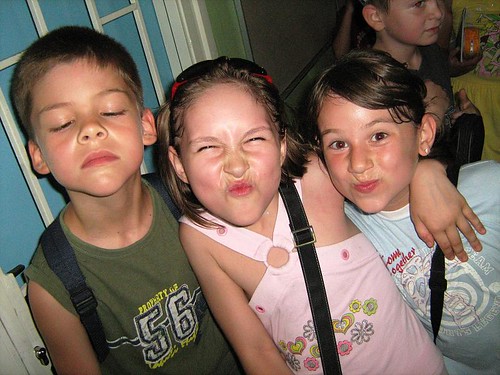Monday, June 16, 5:30pm
I’m writing my first blog entry from my apartment and I’ll post it from an internet café tomorrow or Wednesday, as unlike the other 3 Swatties, my home stay does not have internet at the moment. That’s one of my excuses for posting less frequently and not posting pictures, but I also want to settle in and see things with my eyes before I take out the camera.
Zenica, by the way, is pronounced Zenizza (rhymes with pizza). The c in Serbo-Croat is a “tz” sound.
I visited
The first big thing I’ve noticed is that prices are up, and Zenica is cheaper than
The cost of food is up around the world, of course, but my host mother says food is among the things that have gotten most noticeably more expensive here just in the last two to three years (some Bosnians say as much as 50%). A meal at a restaurant is still cheaper than in the States, but more than when I was here in September 2006. For lunch today I had a small but filling plate of Cevapi for 3 KM, and the very strong but small espressos are 1 KM, as are modest scoops of ice cream. Bureks (a coiled pastry filled with mince meat, potato, or spinach) are 1.30 – 1.50 KM.
And although you might think of
A stroll around the mall yesterday had me raising my eyebrows at prices, and there were plenty of name brand Italian designer products. So much for cheap shopping, thanks dollar! It was fun anyway. I went with Robyn, a William + Mary student, and her host sister, Amina, who is about 10 and speaks great English. Amina was adorable, translating for us in stores (“we are just looking,” “do you have it in brown,” etc.), complaining about how some young Bosnian women wear too much makeup, and telling us how excited she was for Monday and the beginning of Sezam. This will be her third year with Sezam.
And many of the home stays have internet, which is spreading to more and more homes, and costs about 30 KM a month, according to Deivid’s host mother. Most people also have TVs, which get a variety of channels, among them Bosnian, Slovenian, German, and English (CNN International, MTV, National Geographic, Animal Planet, the latter three with Bosnian subtitles). The Eurocup is huge right now, and the NBA finals are broadcast on a local channel live at 3am with Bosnian announcers. (Go Green! Win soon so I can stop waking up in the middle of the night.)
So prices are up and there are plenty of luxury goods familiar to our American eyes, but as with everywhere, there are those who cannot afford them, and those who cannot afford them but indulge anyway. One of the Sezam employees complained that enrollment in the school program is down this summer, partly because, I paraphrase, “some people value buying clothes over an education.” There is also the clash of the young and the old, the older generation preferring to shop at the butcher, the vegetable stand, etc, while a largely younger crowd goes to the newer shopping malls and larger grocery stores. This is a struggle familiar to many other European cities as supermarkets crowd out specialty shops, something that happened in the
One similarity between Zenica and
As I mentioned before, coffee shops abound, both in the mall, along the central streets, and pretty much everywhere. Several streets downtown seem to be solely coffee shops with the occasional restaurant, store, or internet café. It’s been cold and rainy, but as the weather gets warmer I expect we’ll see larger crowds at the coffee shops, where there are both normal tables and chairs and comfortable swings to sit in. Coffee is the nexus of social life here, with people meeting in the home and in shops at all hours to have an espresso or Bosnian style coffee.
So that’s a partial picture of day-to-day life in Zenica.
2 comments:
Guys, this is fantastic! Well, not the part about the higher prices...but I love the updates and the pictures so far--I'm living vicariously in a major way.
Good luck with finishing off the first week--I'm sure you're doing an amazing job.
Free video games provide unlimited 카지노사이트 play, and are great for build up your skills and attempting out new video games
Post a Comment